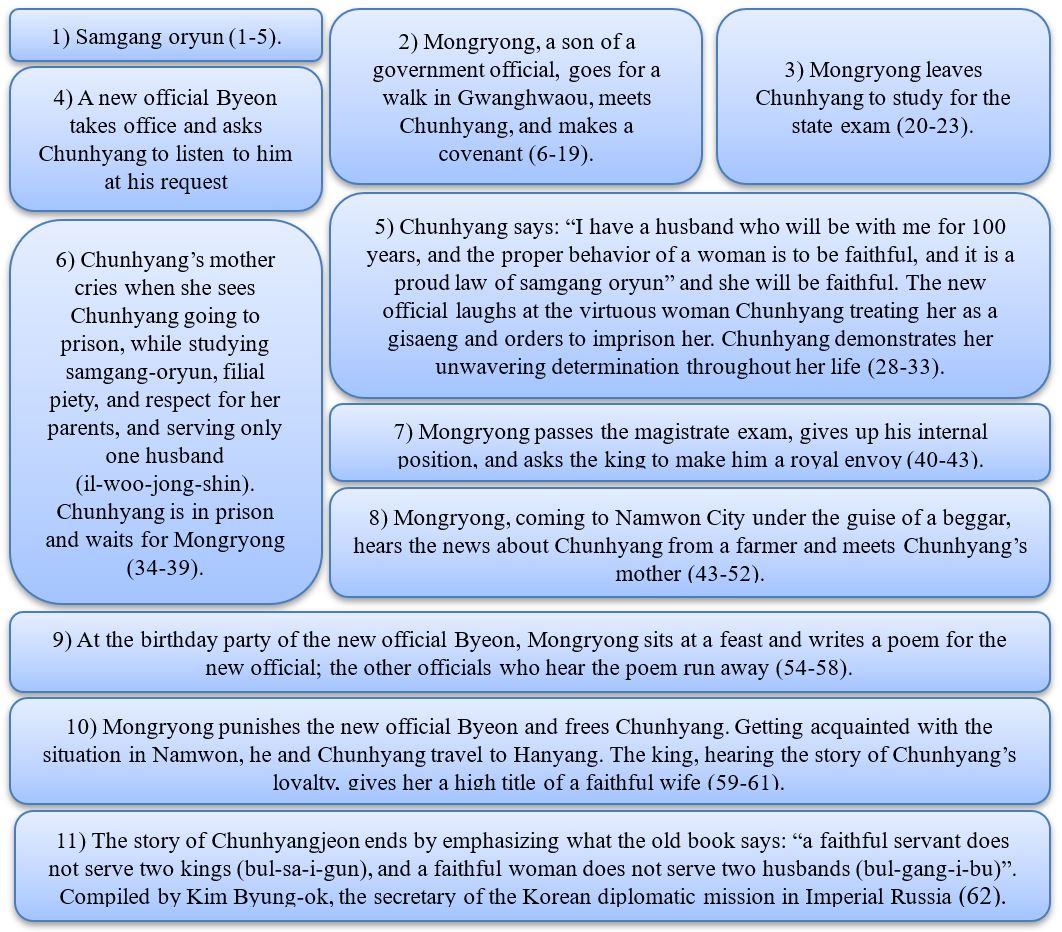A Study of Russia's First 19th Century Textbook of Korean Texts in Linguistic and Cultural Perspective
Abstract
Traditionally instruction of speech, grammar and reading in Korean has been carried out in separate educational units. Recently learning the Korean language has shifted from merely mastering grammar to focusing on spoken language and the communication skills. This article sheds the light on the need for integrated language learning activities in the Korean language and culture instruction using the 19th textbook Chunhyangjeon by Kim Byeong-ok. This research examines the Korean Texts of Chunhyangjeon – the first textbook introduced in Russia for reading in the medieval Korean language. The main purpose of this study is to better understand how the reading, grammar, and culture aspects of the Korean language were taught in Russia in the 19th century. The analysis revealed the need for integrating the medieval Korean texts into the Korean reading classes. The importance of combining the integrated Korean language instruction with the direct teaching method is also discussed. The author argues for the need to use both the traditional reading learning method and the mixed approach, which includes reading and understanding the writer, the reader, and the cultural context. Finally, this article is trying to provide a rationale for integrating reading and grammar education for higher learning outcomes in developing linguistic abilities and language comprehension.
Downloads
References
Hall, G. (2005). Literature in Language Education. Basingstoke:Palgarave Macmilian, pp. 55. https://doi.org/10.1057/9780230502727
Heo, Gyeong-jin., & Lee, Sook (2012). Study on the Korean-language text ‘Chunhyang-jeon’ published in Russia in the 19th century: Korean Culture, 45, 3-24.
Lee, In-hwa (2019). Analysis of Literary Works Included in Textbooks for Korean Language Education: Korean Language Education,166, 237-278. https://doi.org/10.29401/KLE.166.8
Lee, Jeong-hyeon (2021). A study on Korean reading education methods using literary works - Focusing on the novel ‘A Lucky Day’: Korean Literature and Arts, 37, 315-346. https://doi.org/10.21208/kla.2021.03.37.315
Jeong, Lee-Bung (2017). Research on Korean language education using literary works - Focusing on Kim Yu-jeong’s ‘Bom Bom’: Korean Literature, 58, 309-337.
Kim Byeong-ok. (1898). Korean Texts, St. Petersburg, p. 62.
Kim Byeong-ok. (1899). Study Guide to the Korean Language, St. Petersburg. p. 57.
Kim Dong-wook. (1976). Research on Jeungbo Chunhyang-jeon, Seoul: Yonsei University Press, pp. 72.
Kim Jae-wook. (2010). Grammar education in Korean reading: Korean Grammar Education Society, 12, 118-138.
Kim Hye-ran. (2022). A Diachronic Study of Korean Language Textbooks in Russian: Emphasis on Korean-Russian Textbooks from the Late 19th Century to 1990. Seoul: Kyung-hee Cyber University Press. (Global Korean Studies, Master’s Thesis) p. 3.
Kim Young-ran. (2009). Study on the evolution of Korean language education textbooks, Korea University, doctoral thesis.
Trochevich, A. F., & Guryeva, A. A. (2008). Description of written monuments of Korean traditional culture. St. Petersburg: St. Petersburg University, pp. 8-35.
Woo Han-yong (2000). The Use of Literature in Korean Language Education for Foreigners: Research on Korean Language Education for Foreigners. Seoul National University Korean Language Education Instructor Course for Foreigners, pp. 27-48.


This work is licensed under a Creative Commons Attribution 4.0 International License.
Copyright for this article is retained by the author(s), with first publication rights granted to the journal.
This is an open-access article distributed under the terms and conditions of the Creative Commons Attribution license (http://creativecommons.org/licenses/by/4.0/).









1.png)









1.png)











